Music For Browsers
Parametric improvisations for crowd-sourced ensemble of Smart-Devices
This workshop aims to explore the musical possibilities of a crowd-sourced ensemble of smart devices, and from this the aesthetics that can arise by following some precise compositional choices in organizing crowd-sourced improvisations. It aims to familiarize participants with the concept of parametric improvisation and highlight how this is a multidisciplinary phenomenon.
An entirely adaptable workshop in terms of duration (recommended 2.30h minimum considering breaks and critical-constructive discussions), with active audience participation. Language used: ENG or ITA
For all ages, no prerequisites other than on-site presence and possession of a smart device (smartphones primarily, but other smart devices are not to be excluded).
Music for Browsers is a workshop that aims to organize collective performances, familiarizing the audience with parametric improvisation and the use of Smart Devices (S.D.) as tools for musical expression. The title of the workshop plays on the ambivalence of the word "browser": on one hand the reference to the applications used to surf the web is very clear, representing the fundamental component of the experience, characterized by accessibility and immediacy of use. On the other hand, linguistically speaking, the verb "to browse" is:
"To look casually for whatever catches your eye, rather than searching for something specific”.
The resulting image is certainly stimulating in the context of performances that involve the audience and their smartphones (or other S.D.) as a sound source diffused in space.
The workshop is structured as a series of director-led improvisations in which participants use their smartphones as tools for musical expression. Each piece is based on one or more web pages conveniently accessible via QR code. The participants' interactions with the instruments(smartphones), under the direction of the conductor, and the sound characteristics of each web page then characterize each improvisation.
PROGRAM
[Click to open...]
(topics and related exercises/improvisations listed)
▷ intro
Something about me
Explanation of concept, goals, methodology and aesthetics.
Practical demonstration with no audience interaction with S.D., fine tuning of setup for recording: “Penta(gin)tonic”
▷Improvisation as a multidisciplinary phenomenon
intro
Physical exercises on improvisation, freely inspired by "Play" (by Oscar Jan Hoogland, 2007) (outdoors):
1. Given an imaginary rectangular perimeter (marked or not by elements physically present on site) participants walk freely within this perimeter.
(It may be useful for participants to be divided into smaller groups of ~7 participants, depending on their numbers and/or for logistical reasons)
1.1 Add walking in different directions (backwards, sideways) (if not already emerged naturally, in that case make it clear to participants*)
1.2 Add different speeds (*)
1.3 Add awareness of other participants' spatial movements (*), ""The mime""
2. Given an imaginary rectangular perimeter, participants walk freely within it, being free to decide whether to enter or exit the perimeter.
Outside the perimeter they are asked to remain motionless. Each time they enter the perimeter they are asked to repeat Ex.1 (& 1.1,1.2,1.3).
2.1 Add awareness of spatial movements, entrances/exits from the perimeter of other participants (*)
2.2 Add imitation and reverse imitation(*)
2.3 Add contrast/counterpoint (*)
▷ break
▷Parametric analysis and improvisation
Parametric analysis of improvisations performed with movements:
(Notes on ranges)
In exercises (1,2):
▹Presence (In/Out)
▹Direction (forward, backward, lateral)
▹Speed (low, medium, strong)
Parameters used as a means of interaction with other participants:
Awareness of others
Imitation (& i. inverse)
Contrast or counterpoint
Possible application of parameters in music
(notes on partial approach, and on the “egocentric western tradition”)
Hints on other possible multidisciplinary applications
▷Music for Browsers
The figure of the conductor and a crowd-sourced vocabulary of coded gestures
Improvisations with single parameters (Each study is accessible from a dedicated web page):
▹Duration
Continuous white noise (on/off covering speaker)
“Hypersimple”
▹Dynamics (p, m, f)
Continuous white noise
“Hypersimple”
“Beat(s)us“ (on beatings)
Continuous 5-part pentatonic tuned synth
Continuous pentatonic tuned synth with 5 parts + time evolution on 5 degrees (ed. VI-IV-I-V)
Continuous modal tuned synth with 7 parts + time evolution on 5 degrees (ed. VI-IV-I-V)
Dynamics increased by proximity to the microphone (+ solos)
▹Density
continuous white noise
“The Woodpecker”
“The Modulable Woodpecker” added variable tempo via slider
“The Woodpecker” 5 parts pentatonic synth with variable tempo via slider
“The Woodpecker” 7 part modal synth with variable tempo via slider
▹Pitch
slider that controls pitch synth
5 buttons that control pitch (+ percussive envelope) of a pentatonic tuned synth
7 buttons that control pitch (+ percussive envelope) of a modal tuned synth
▹Timbre
BPFN: continuous white noise with preset random variable filter
MBPFN: continuous white noise with modulable filter
5-part continuous pentatonic tuned synth with variable filter via slider
7-part continuous modal tuned synth with variable filter via slider
discussion feedbacks and ideas
▷Improvisations with multiple parameters
Single note synth with variable sustain via slider
5 buttons that control pitch of a pentatonic tuned synth with variable sustain via slider
7 buttons that control pitch of a modal tuned synth with variable sustain via slider
▷ break (1h)
▷Improvisations with parameters used as a means of interaction with others
Parameters used as a means of interaction with others:
Unison
Imitation (canon and exchanges)
Counterpoint (+ solos)
(Examples as above)
▷Reduced ensembles and non-improvised/structured compositions
Structures
“Linda’s horns”
“Hocket for two smartphones”
▷Collective hearing session of selected recorded material (stereo speaker or binaural reduction) and open discussion of future developments
▷Credits and acknowledgments
Optional (and depending on the context and the previous preparation of the participants):
▹Deepening on the code [Puredata(PdL2Ork) + PdWeb + JS "tricks"]
Materials and facilities
▷A large quiet room (size depends on the number of participants), equipped with a couple of electrical outlets for recording equipment
▷Possibly also an outdoor space that can be used to move with more freedom
▷A projector
▷The presence of participants equipped with S.D.
▷Some printed sheets
▷Pillows/chairs for all participants and a desk for presentation
▷One Ambisonic mic (provided)
Gallery
Workshop
Improvisation as a Multidisciplinary Phenomenon
Physical exercises on improvisation, freely inspired by "Play" (by Oscar Jan Hoogland, 2007) (outdoors)
The initial part of the workshop is devoted to some "free-body exercises" to be performed preferably outside, or inside a spacious room. The purpose of the exercises is to familiarize participants naturally with the concept of parametric improvisation. In this case, the parameters will concern body movements, including some very free directions from the conductor.
EX 1
Given an imaginary rectangular perimeter (marked or not by elements physically present on site) participants walk freely within this perimeter.
(It may be useful for participants to be divided into smaller groups of ~7 participants, depending on their numbers and/or for logistical reasons)

EX 1.1
Add walking in different directions (backwards, sideways) (if not already emerged naturally, in that case make it clear to participants*)
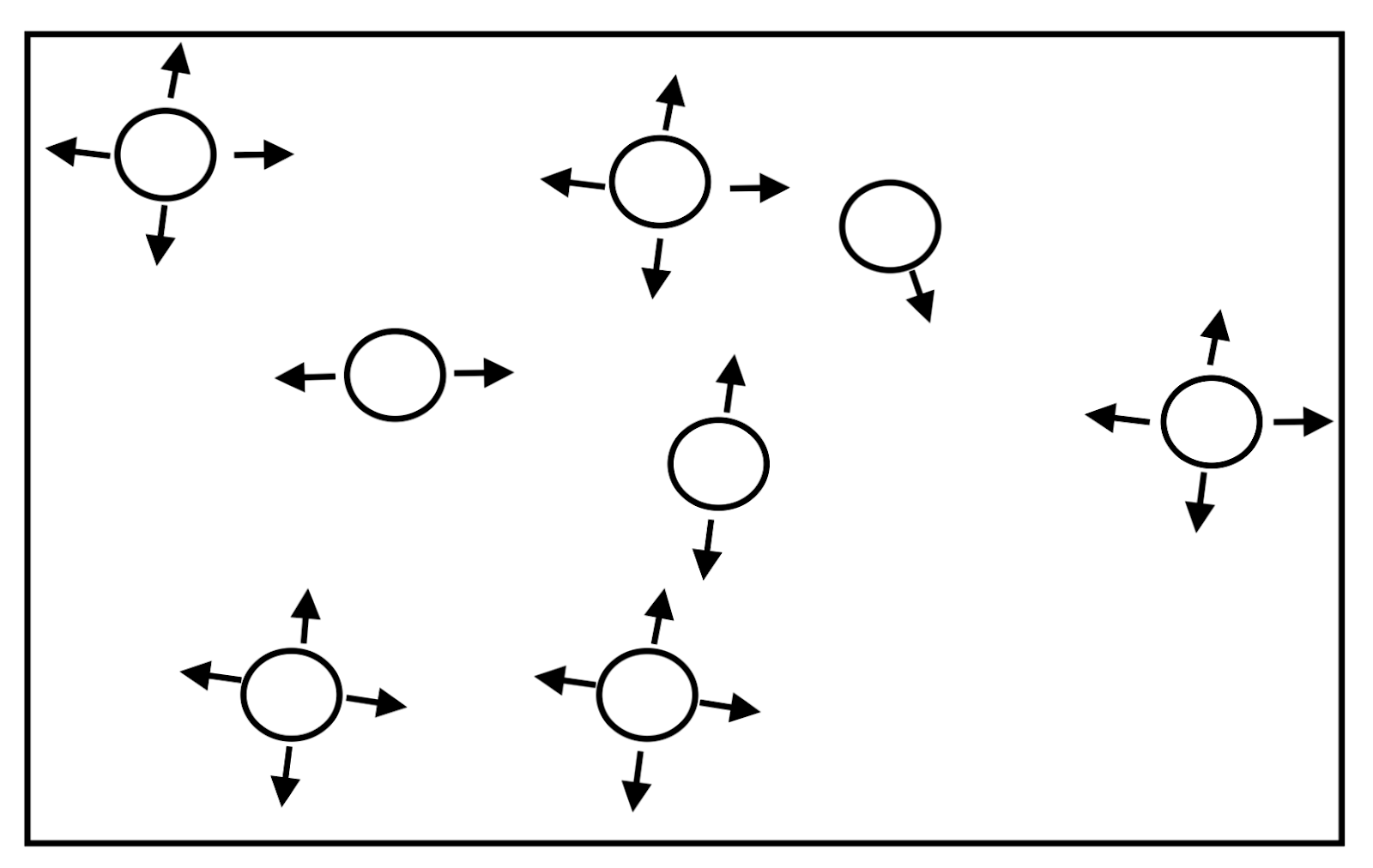
EX 1.2
Add different speeds (*)

EX 1.3
Add awareness of other participants' spatial movements (*), ""The mime""

EX 2.
Given an imaginary rectangular perimeter, participants walk freely within it, being free to decide whether to enter or exit the perimeter. Outside the perimeter they are asked to remain motionless. Each time they enter the perimeter they are asked to repeat EX.1 (& 1.1,1.2,1.3).
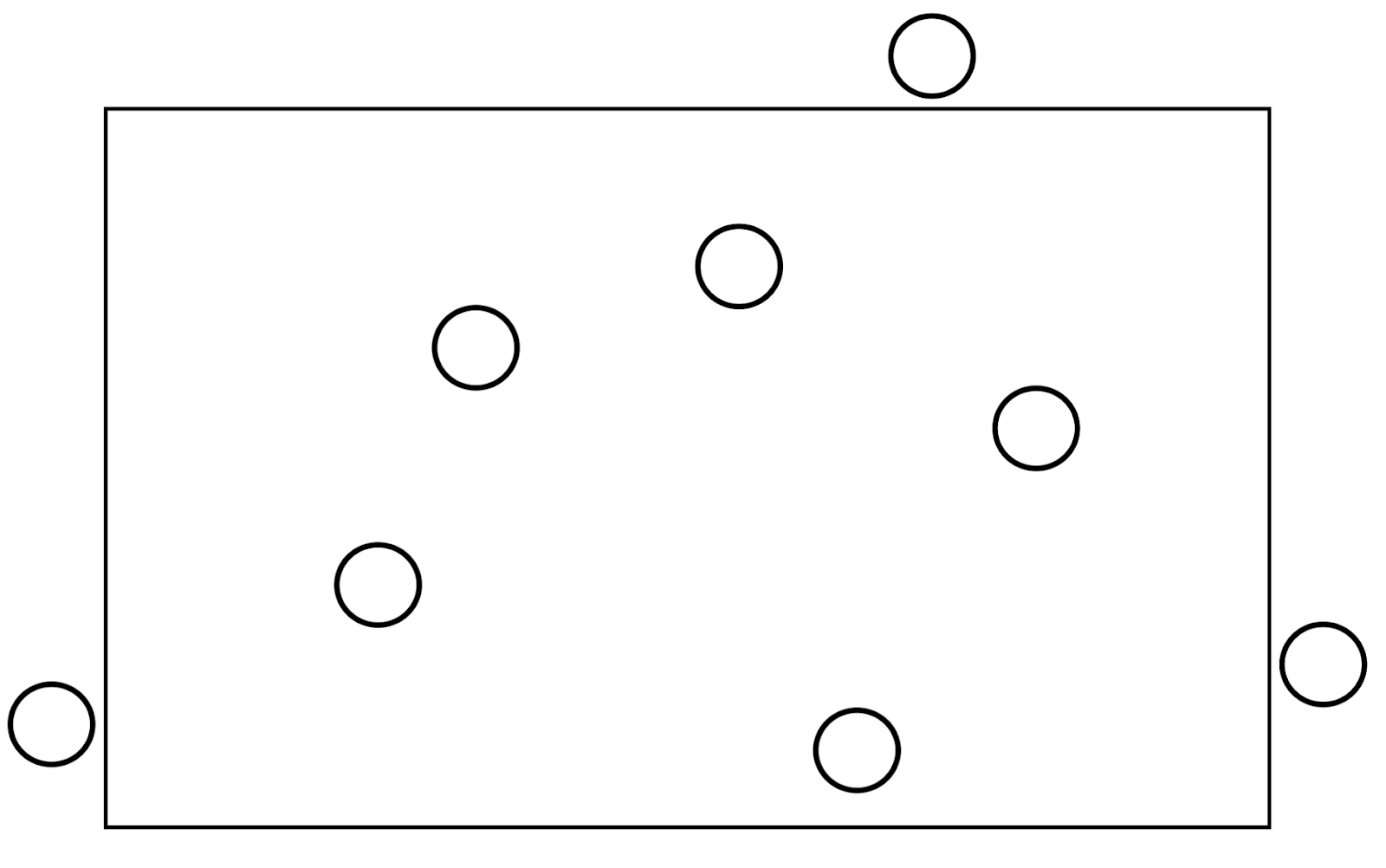
EX 2.1
Add awareness of spatial movements, entrances/exits from the perimeter of other participants (*)
EX 2.2
Add imitation and reverse imitation(*)
EX 2.3
Add contrast/counterpoint (*)
Parametric analysis and improvisation
The first part of the workshop consists of some outdoor exercises, useful for familiarizing with improvisation understood as a multidisciplinary phenomenon, in this case applied to movement. After the practical implementation, there will be a phase of analysis of the exercises themselves, the goal being to identify the simple parameters on which the movements in the exercises were based. This could be an example of parameterization:
In exercises (1,2):
▹Presence (In/Out)
▹Direction (forward, backward, lateral)
▹Speed (low, medium, strong)
Parameters used as a means of interaction with other participants:
▹Awareness of others
▹Imitation (& i. inverse)
▹Contrast or counterpoint
Possible application of parameters in music
Applying the same parametric reasoning to music, in a view obviously limited by the influence of our culture on our perception of "what music is," is somewhat possible through various simplifications. Thus counting the limitations of my western music education I would exemplify a possible parametric simplification of the musical fact in this way:
▹Pitch (if any, from low to high)
▹Duration(short to long)
▹Dynamics(from pianissimo to fortissimo)
▹Timbre(from closed/dark to open/brilliant)
▹Density(rarefied to very dense)
These parameters, always characterized by a range (from one extreme to another), are our field of investigation in the various improvisations: depending on the parameter we can decide to focus our action within the range of possibilities offered to us. Although the workshop provides a propaedeutic approach, starting first with the exploration of a single parameter and then expanding to more than one at the same time, already at this stage the figure of the conductor becomes fundamental to the creation of a meaningful musical discourse. Indeed, with an abundant number of performers, listening to each other becomes difficult and improvisational articulation suffers. The conductor is then charged with giving the performers directions on the exploration of the previously identified parameters.
A crowd-sourced vocabulary of coded gestures
The performances that are part of Music for Browsers consist of improvisations performed with smart-devices and interactions with them, during the workshop all participants are interpreters. The arrangement of the interpreters is adaptable to logistical availability but must include an ambisonic microphone (see Materials and facilities) in the center of the room(or area) in which the interpreters are positioned. The arrangement of interpreters is random within the room but should not include isolated groups unless it is a choice shared with the conductor. If logistically possible, the conductor should also position himself in the center of the room/area occupied by the performers.
The conductor in this case is responsible for imparting the coded directions that will be treated in detail below. However, the figure of the conductor is not limited to giving directions by interpreting a score; it has no written part and must therefore establish an improvisational dialogue with the performers. The conductor must simultaneously be cause and reaction with respect to the performers: directing their movements, in a musical sense, and at the same time responding to their input. The conductor therefore must have at his disposal a vocabulary of coded gestures, the codification of which must be shared with the performers themselves. In this sense, imposing gestures on groups that might from time to time be heterogeneous and of different cultural backgrounds would not make sense, and it has been chosen to propose here a vocabulary for illustrative purposes only, useful to give an idea of the kind of interaction required for director-interpreter communication.
 |
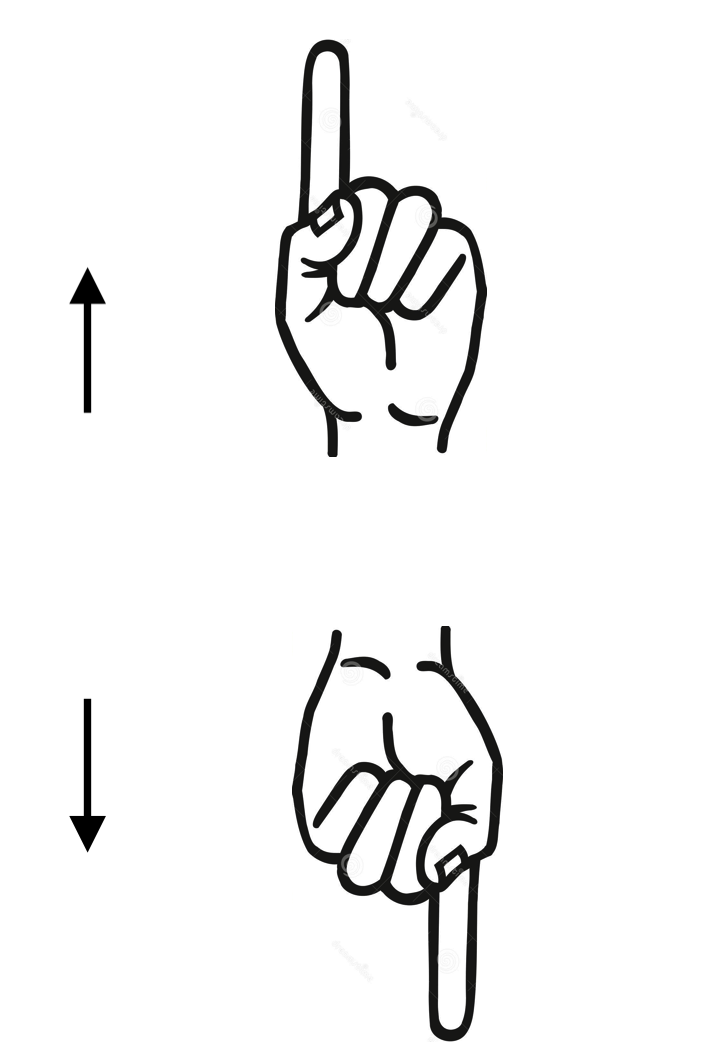 |
 |
▹for Dynamics(from pianissimo to fortissimo) |
▹for Pitch (if any, from low to high) |
▹for Duration(long to short) |
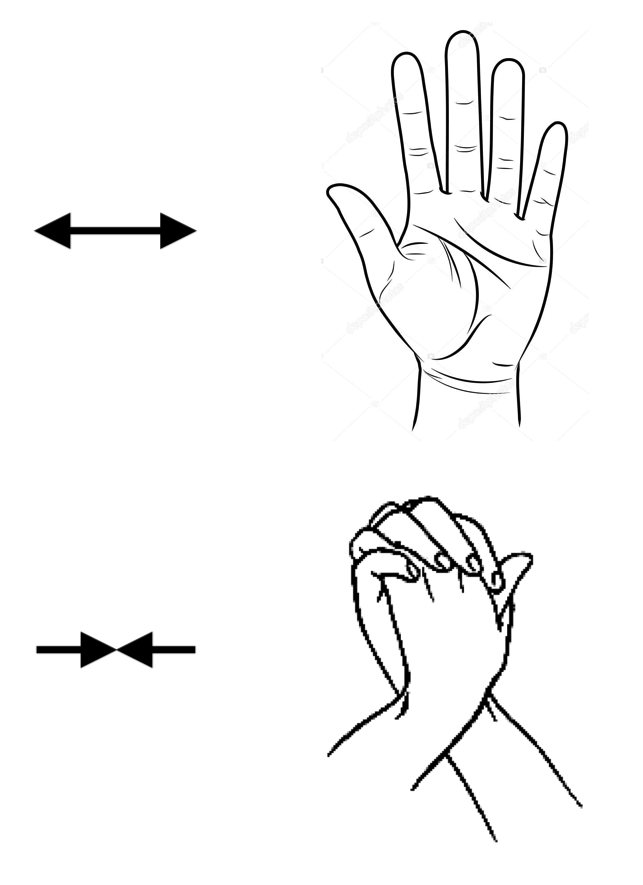 |
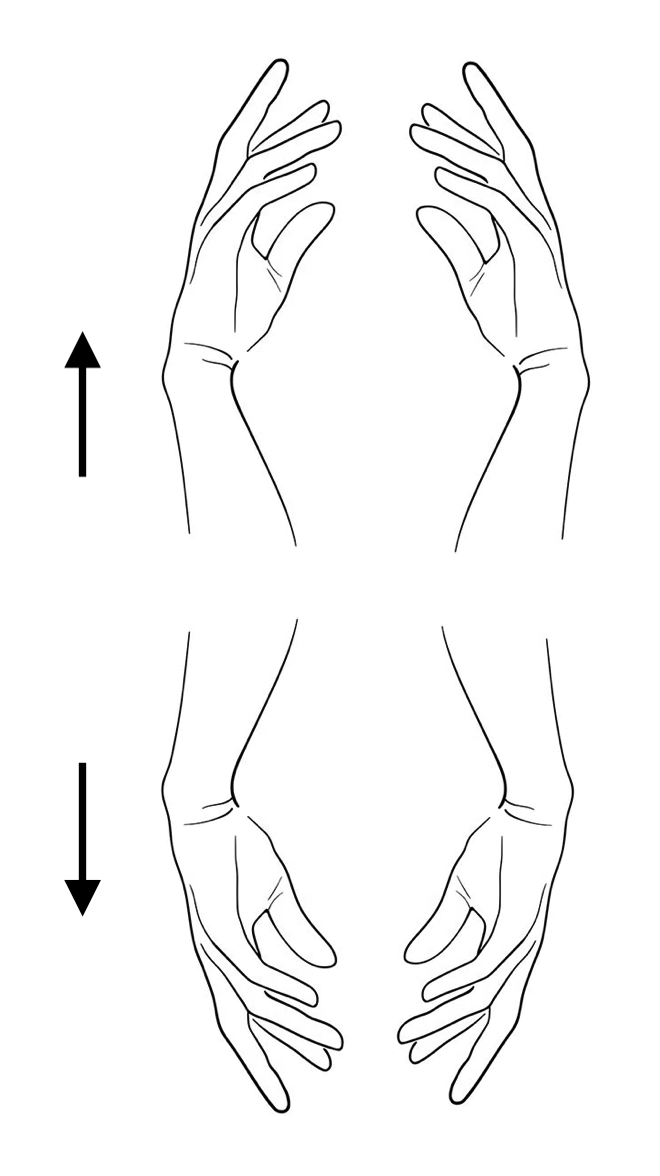 |
|
▹for Timber(from closed/dark to open/brilliant) |
▹for Density(rarefied to very dense) |
Smartphones as musical tools?
Scan this QR-code with your smartphone camera!
Press the blue button for audio generation.
For IOS users: please use Safari.
Please don't lock your smart device during audio generation.
Move yourself and your smartphone freely in the performance space.
Interact freely with your smartphone in any way, play with the volume control, or physically with the speaker itself.
 0.Continuos White Noise
0.Continuos White Noise 1.Hypersimple
1.Hypersimple






